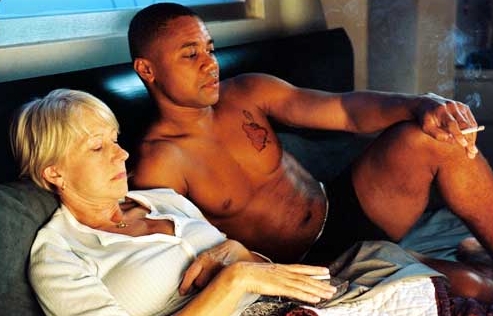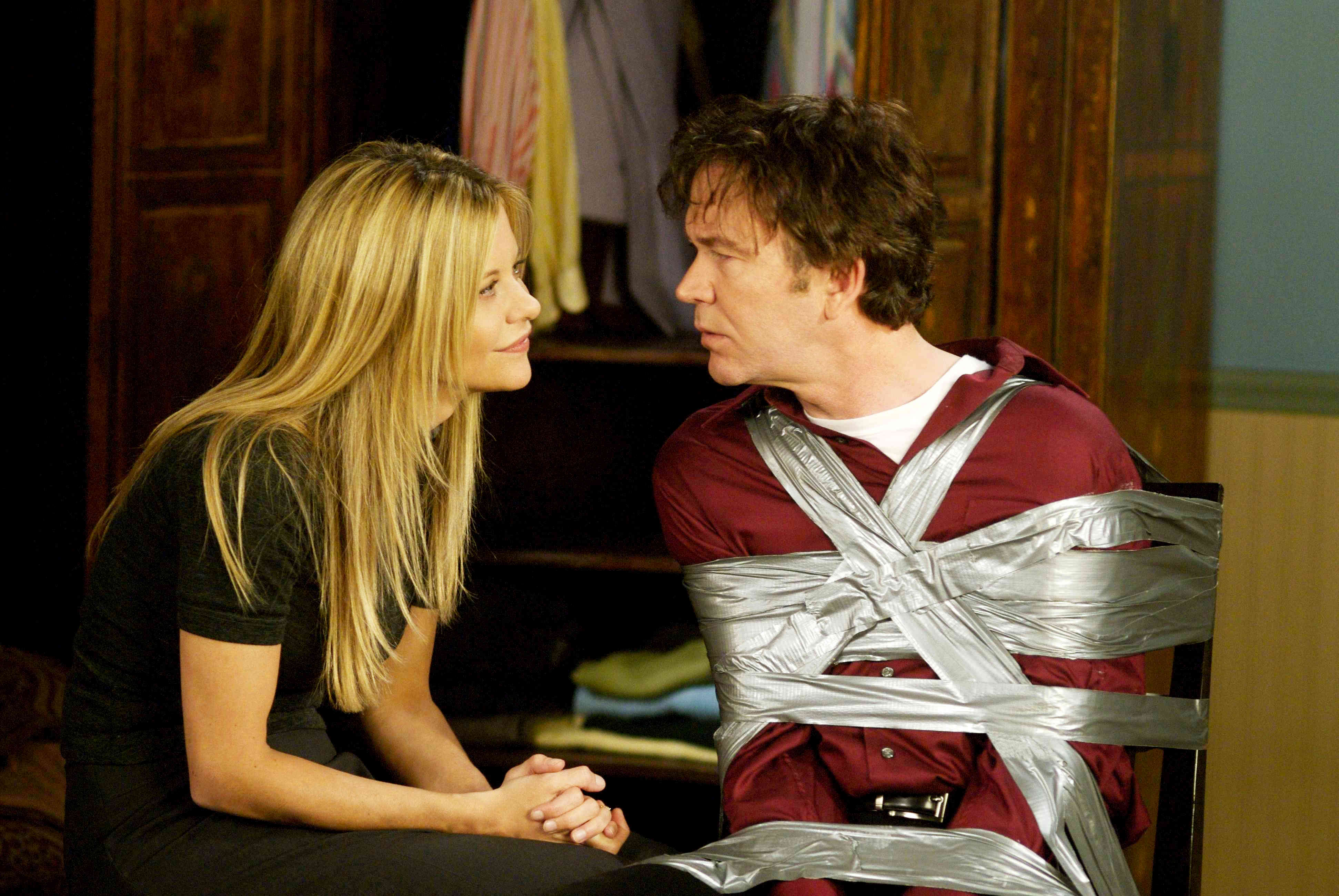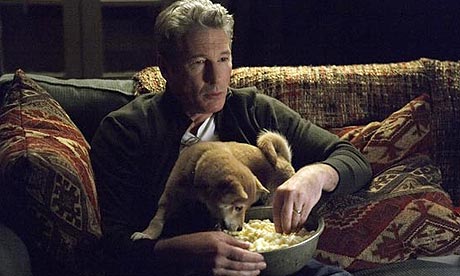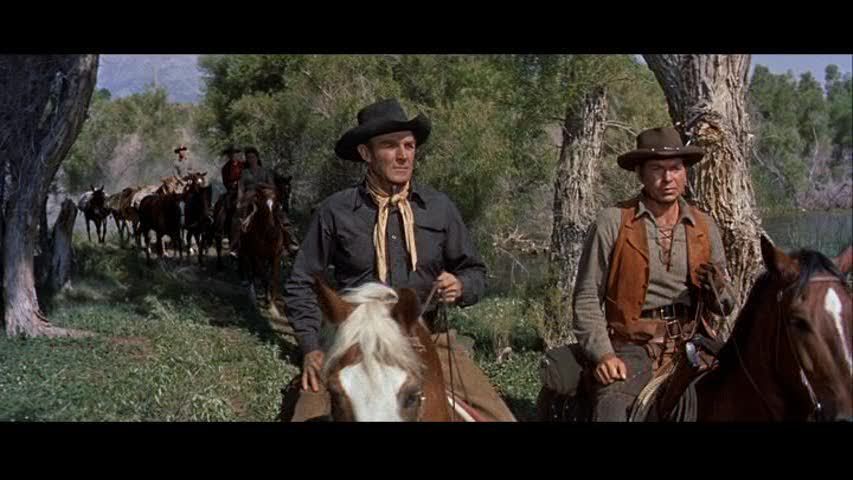
Michael Moore's films raise the question of the relationship between political communications and political action. One wonders how much Mr. Moore is interested in
filmmaking for its own sake, or is it just a means to an end. His enemies would no doubt vote for the latter, and cite the failure to trigger revolution in the street after last October's release of
Capitalism: A Love Story (2009) as proof of his complete failure.
Curiously, I think the film is both his most accomplished and most flawed work. Accomplished because the
filmmaking has become smooth, persuasive, skillful and compelling. Flawed because of much of his evidence is poorly assembled, gleaned from secondary sources and not necessarily close to the wounded heart that made his first feature,
Roger & Me such a powerfully personal work.
Negatives: Moore's street theatrics don't work anymore. After 20 years, there is nothing funny about a man with a bullhorn in front of a big corporate building being told to go away by security. It's super unfunny now that Moore is a celebrity--one guard didn't even need to ask him his name. Another security man was smart enough to tell his subordinate to stop trying to cover the lens. Everyone knows it doesn't look good to act hostile, and so not many are anymore. They politely but firmly tell Moore to leave and he goes on with his lame explanations about making citizens arrests. What is this supposed to accomplish? Put this routine to bed.
Moore completely abdicates any explanation of the meltdown of 2008 and acts as though derivatives are too hard for anyone to understand. You don't have to be able to execute the actual computations governing
CDOs and other obligations to understand what they are. They are simply bundling and
commoditizing mortgage obligations exactly the way we have been doing with corporate debt for years. (When I was an attorney, we began
commoditizing intellectual property as a way of raising capital for creative artists.) There are two new wrinkles: (a) the bundles of mortgages included an inordinate number of high-risk loans and (b) the people selling these bundles were hedging that they might fail. Added to this, we have learned that they were engineered to fail, that money was being loaned to people who were never expected to pay, and that therefore more money was being put into the hedges than into the investments. That is, it was the old scam of creating a business which makes more money if it fails than it succeeds.
But for some reason, Moore backed away from this, and tried to get laughs of the "I'm just another dumb guy" like you variety. This is obviously not true, since we are not well-heeled Academy Award-winning celebrity filmmakers. So his dumb-guy stance is doubly insulting; it's insincere and it assumes that we are all too dumb for all this complicated finance.
Generally speaking, the proofs offered and the conclusions made don't add up. Moore shows some victims, both individual and collective, of unregulated capitalism, and offers this as proof that capitalism is
un-democratic and
un-American. Personally, I would be willing to entertain an argument that capitalism runs counter to American republican democratic ideals, but Moore doesn't offer any. He doesn't offer intellectual or thoughtful argument of any kind. It's as though he were to show us a
smushed-up kitten on the road and argue that we need to abolish cars.
And finally, Moore throws his hands up in the air when it comes to proposing action to change or correct things. He just says he's tired and ends the movie. Well, if you're that tired, why did you make the movie? Why not propose actions to take? You've done it before. It allows the film to sink at the very last moment.
Positives: Moore's use of rapid-fire editing to make satirical points is getting sharper and sharper, and as I watched this film I wished I had seen it with the audience, as there are some terrific laughs borne of film's ability to put things in juxtaposition and invite the audience to compare. Often the contrast between the earnest narration and the
snarky visuals was hilarious. I literally--not virtually--actually, physically fell out of my share as Moore's voice is heard earnestly speculating as to why and how we had been convinced that capitalism is inextricably linked to freedom and democracy while the screen shows a scratchy old clip of an insane Svengali-type hypnotist bamboozling his victim. I wish I could give you a screen grab, but it is as funny as anything
Ernie Kovacs ever did using a cheesy old piece of footage.
As before, Moore is expert at particularizing the conditions he is criticizing. He finds people who have been hurt who command respect and not pity. He was also
phenomenally lucky or smart to have cameras in the Capitol Windows and Doors plant during their sit-in, when the new President expressed sympathy for their action. The use of positive examples, such as the workers' cooperative high-tech company featured also buoys the audience, lifting us out of indignation.
I liked his rehabilitation of the best aspects of Catholicism, the social criticism and social ministry that Reformed Christians (as I was raised) find admirable. Moore ignores the cynicism about the Roman church and finds decent and bold spokesman for the Church founded by Jesus.
He also manages to pin down more official spokespersons that he has in the past, including the woman who is supposedly responsible for tracking the TARP money.
Finally what works for him best is his sincerity, especially about our shared hopes of what American could be. It does seem ridiculous that everyone, at least in our country, can't live comfortably without fear of losing their jobs, their homes or their health coverage. If we have enough, why do a few need to have so much more than they need, while so many have less? Weren't we supposed to have left that world behind when our ancestors came from Europe? What did we start this country for anyway?

































